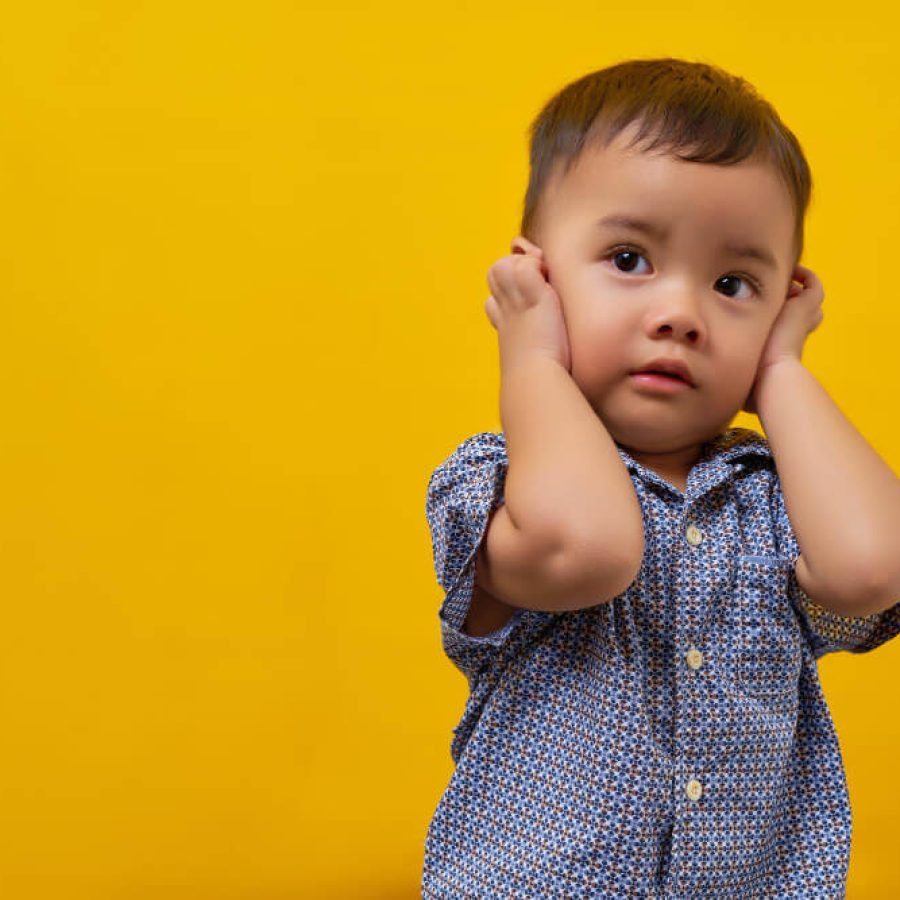We all invest ourselves in allowing infants to grow as happily and healthy as possible. Although we want to protect them from all harms, we are not likely to escape the phases involving childhood fears.
It’s completely normal for a child to experience fear. This feeling serves as an alert, a type of measurer of just how much a certain situation might be dangerous.
Just like so much more in our lives, the excess is the real problem in this. Generally speaking, everything that overflows causes problems, and fear in childhood is no exception.
Most Common Causes Of Childhood Fears
According to the child’s age, their fear might signify different things, and specially originate from diverse sources.
Time goes by, and the Little Ones realize that loss and change are phenomenons that can happen.
As the child grows older, they are increasingly more connected to the people that are part of their life: Mom, Dad, Grandparents and other family members, friends from school, nannies and such.
They also learn that there are bad situations that can happen, and they’re not ready to deal with the changes that it may come with – in case of a natural disaster, or someone trying to break into their houses.
In more extreme situations, children might develop an enhanced sense of fear if they’ve gone through some type of trauma. If that’s the case, in addition to having constant and empathetic communication, also reach out for specialized help from pediatricians.
Typical Childhood Fears According To Age
Infants (0-1 years old)
By the time infants are 6 to 7 months old, they can already recognize the people that are part of their lives. You’ll notice that the Little Ones are happy when Mom is around, but might get upset and clingy when you’re away, even if just for a bit. Unfamiliar sounds or spaces can also cause discomfort.
Overall recommendation: build your baby’s trust.
Real-life examples: let them know you’re around even if you’re not in the same room by keep talking to them. Encourage them to interact with new people when they’re on your lap. Treat other people nicely when you’re next to your baby so they make positive associations with new acquaintances.
Toddlers (1-3 years old)
Separation anxiety can be quite common at this age. Also, experimenting new things and meeting new people may cause distress exactly because it’s something new! Going to a doctor, participating in a reunion outside of their house or interacting with unfamiliar animals can cause insecurity.
Overall recommendation: communicate with your toddler and create positive associations when something new is presented. Talk to them and give age-appropriate explanations of all the things that are part of their lives.
Real-life example: explain why you are visiting new people, and what’s exciting about the house you’re going to see; why an appointment with the doctor is important, and what you can do together as a treat after you’re done with this chore.
Pre-schoolers (3-5 years old)
This is the time where their imagination runs wild. It might be hard for them to separate the real world from fantasy. Again, what the child can’t see or make sense of can cause them fear. Common examples are noises at night, being alone in the dark, monsters hidden where they can’t see, bad guys from a show coming to “punish” them for something.
How to handle: encourage the child to talk about what they are feeling and make compromises. The resolution to these fears might take a little longer to be solved, but it’s fundamental parents respect their kids’ feelings.
Real-life example: if the problem is the fear of the dark, keep a light next to them. Gradually, as the fear lessens, move the light away from them and closer to the bedroom door until eventually it’s out and the child is comfortable in the dark.
Older children (5+ years old)
Getting hurt, being affected by “bad” people, not feeling safe in their house or in a new environment. Bad dreams, monsters in the closet, under the bed, getting sick, dangers that unfamiliar places or animals can cause.
Overall recommendation: again, communication is key. Ask questions of where they heard of such dangers, and what makes them think they’re not safe. Create strategies that allow your child to feel safer.
Real-life example: if they’re troubled with the security of their house, create a routine of locking doors and windows together. Inspect the beds and closets of the whole house so they can trust that there’s no harm hidden. Eventually, the need for inspection will likely pass.
Handling With Childhood Fears
As we’ve shown a few of the most common childhood fears and techniques to cope with them, the work for parents continues!
An overall recommendation is that parents should embrace their child’s feelings, but when it comes to fears, parsimony is advised.
You’re not supposed to make your child think their fear is 100% reasoned, because this will only make their insecurities feel validated. On the other hand, you absolutely have to avoid dismissing their concerns and making them feel like their feelings are not supported.
My Child Is Scared: When Should I Look For Professional Help?
We’ve covered the topic of childhood fear according to the different developmental stages and we’ve given suggestions on how to handle possible scenarios.
As much as parents should not be too alarmed over their child’s fears, some specific situations do require professional help.
Overall, look for a pediatric psychologist if you feel the child is somehow incapacitated because of their fears.
- Do they become paralyzed and unable to respond to your stimuli?
- Do they refuse to come out of what they consider to be a safe space?
- Have you had to deal with exaggerated tantrums because of their fear?
- Have they been often wetting the bed, having trouble sleeping or even not eating?
Observe these behaviors and try to assess how much space does the fear occupy in their lives. This should help you decide if medical assistance is necessary.
Coping with childhood fear is a necessary step in order to give your child the emotional resources to navigate their emotions and insecurities. Remember that fear is normal, but it should not make us feel powerless.
Just as fear is a normal feeling and part of our kids’ emotional journey, so is learning how to deal with unpleasant situations: here’s what you should know about stress in early childhood.


